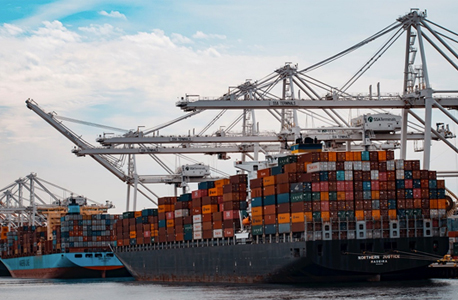Economic Issues Have Vast Consequences for American Students
“Time alone,” writes NYT economist Peter Goodman, “will not solve the Great Supply Chain Disruption.” In his article from early 2022, Goodman echoes a growing consensus among economists and industrialists that the pre-pandemic consumer status quo of “cheap and reliable shipping” may never be restored. The global economy’s reemergence has, unfortunately, resulted in a synergism between three factors that have strangled the supply chain: despite the general economic slowdown (layoffs, decreased production), there was a sharp rise in demand for durable goods, combined with a global shortage of shipping containers. These circumstances have endured for nearly the past three years, and continue to place strain on supply chains as well as contribute to other economic issues, namely inflation.

In the United States, K-12 schools are massive consumers of resources – between expenses including food, supplies, and furniture, they each spend millions on material purchases vital to their operations. According to the October 2022 School Pulse Panel (conducted by the Dept. of Education’s Institute of Education Sciences), the supply chain crisis has significantly impacted schools’ ability to function with their usual purchasing habits. Procurement of “Laptops and other electronic devices” was the area that saw the greatest challenges for schools, with 48% of all public schools reporting some degree of impact. “Food services” was the second largest category by percent impacted.
Although a slim majority of schools overall saw no issues with their technology supplies (52%), that figure shifts noticeably among certain demographic identifiers. When the data is categorized by environment type, suburban schools have a more substantial majority with no impact (55%), while rural and urban were both at 51%. The majority of schools in towns (Urban clusters outside of urbanized areas) experienced a negative impact. This corroborates The Rejuvenate Project’s own polling from August 2022, which found that students in urban and rural communities fared worse than their suburban peers in terms of the stability of their technological resources.
The IES’ distinction between schools of different socioeconomic categories was made via the Income-to-poverty ratio, with an IPR of 200% being the threshold mark (per NCES, IPR is the “percentage of family income that is above or below the federal poverty threshold set for the family’s size and structure”). The majority of schools which were in communities that had an IPR at or above 200% experienced a negative impact on the procurement of devices. Among that group, most schools (30% overall) cited either a severe or moderate level of impact.
The data also highlighted racial inequities between schools which had a substantial majority of students of color (SOC)(>75%) and those which had largely White student bodies (<25% minority). In the latter category, 52% of schools saw no adverse effect of the supply chain crisis on their technology procurements, with only 2% reporting severe problems. In contrast, nearly 1 out of every 10 majority-SOC schools say that they are facing maximum severity problems. Another 24% claims moderate-level impact, with only 19% reporting limited impact.
When compared by grade level, there was a slight difference between elementary, middle, and high schools. A significant portion of all reported that there was some level of negative impact (47%, 47%, and 52%, respectively), though high schools led by a five-point margin. This may be attributed to the large difference between the concentrations of students at high schools versus elementary schools – though there are 70,039 Pre-K, elementary, and middle schools in the U.S, high schoolers are served by only 23,529 institutes (NCES).
The supply chain crisis’ devastation across every level of K-12 education is evident, with approximately half of all schools in every demographic category reporting some degree of impact. With no end to the crisis in sight, it is imperative that new policies and practices are quickly implemented to reduce today’s immense educational disparities.

